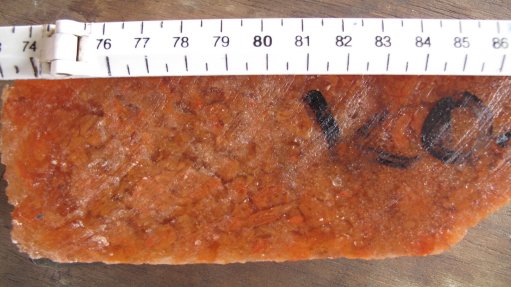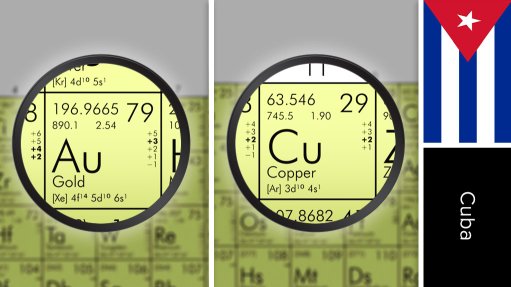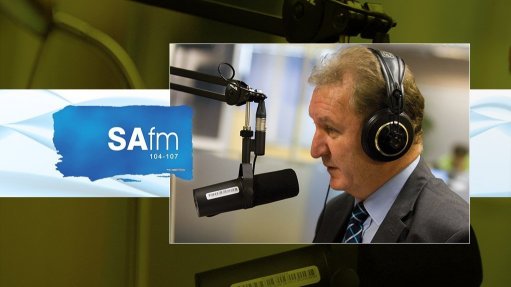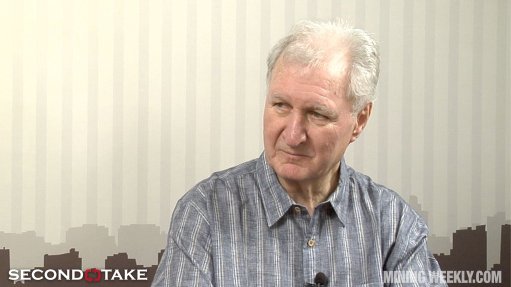First tin concentrate shipped from Uis in 30 years


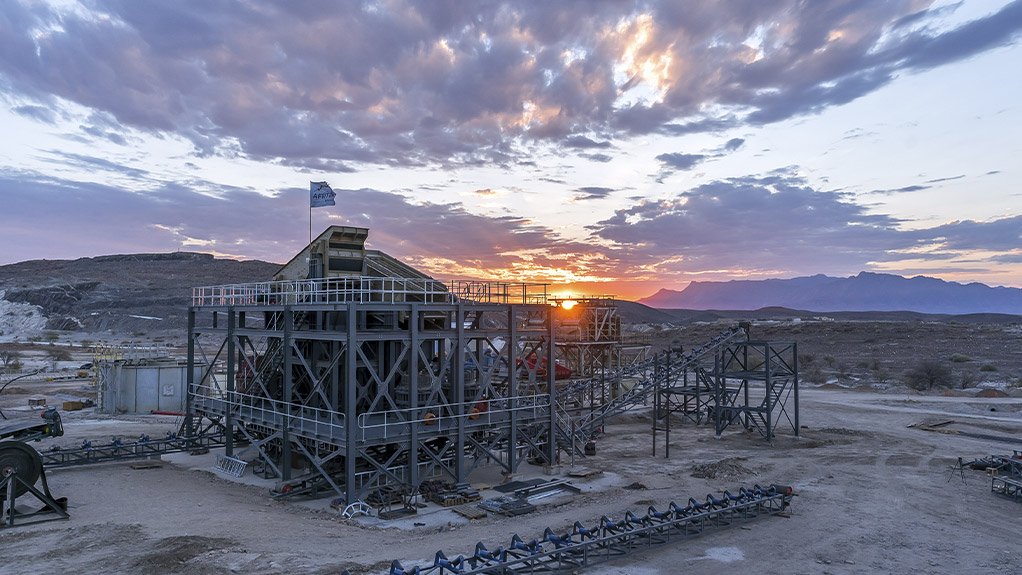
ANTHONY VILJOEN Tin exceeds the growth prospects of other commodities
IN PROCESS Future shipments should to reach about 65 t a month when production is at full capacity
Tin miner AfriTin Mining successfully shipped its first tin concentrate from the newly recommissioned Uis tin mine, in Namibia, in November last year.
It was the first tin concentrate shipped from the mine in about 30 years since the mine closed in 1990, following a tin price collapse.
However, a positive outlook for tin has renewed interest in the commodity, making projects, such as Uis, profitable again, AfriTin Mining CEO Anthony Viljoen tells Mining Weekly.
Shipping of the first concentrate followed AfriTin Mining’s completion of the Phase 1 pilot plant, which has a nameplate capacity of about 50 0000 t/y.
Future shipments are expected to reach about 65 t a month when production is at full capacity. The first shipment was about a quarter of that, but Viljoen expects successful ramp-up to full capacity within the first quarter of this year.
A one-year offtake agreement was signed in August last year with Thai smelting and refining company Thaisarco, with the option to extend.
By November last year, £3.8-million had been raised through the issue of unsecured loan notes to finance the Phase 2 expansion of the Uis mine, which is at the bankable feasibility stage.
The financing will also be used to conduct testwork on recently discovered lithium, which is associated with the tin-bearing pegmatite orebodies.
The loan notes have been placed with a strategic African tin trading group, AfriMet Resources, as part of a collaborative partnership to identify further opportunities for AfriTin Mining and current shareholders.
The tin-bearing sediment at Uis lies in a 32-km-wide pegmatite belt stretching from Cape Cross at the coast, a distance of 130 km.
AfriTin Mining’s new project covers three project areas that were all previously operating tin mines. Phase 1 comprises the development of the Uis mine and the construction of a processing plant.
Room for Growth
Concurrent exploration programmes are targeting further mineralised pegmatites with low stripping ratios to maintain mining stockpiles and reduce expenditure.
A regional mapping programme on surrounding pegmatites confirms the presence of more than 180 outcropping pegmatites, with visible cassiterite mineralisation, some within 5 km of the processing plant.
The initial orebody, where mining has begun, is a historical pit named the V1/V2 pit and is up to 80 m thick along a strike length of 1 km.
Up to 12 historical pits comprise reserves outlined by consulting engineering firm SRK in 1989, which showed a total reserve of 70-million tonnes grading 0.136% tin. However, these historical estimates were not reported to any recognised minerals industry reporting code.
The estimates signify significant expansion opportunities for Uis, once one of the largest opencast tin mines in the world.
Viljoen, who will represent AfriTin Mining as a delegate at the Investing in African Mining Indaba, explains that recent confirmatory drilling in one of the historical pits revealed a resource about 70% larger than what was previously identified by SRK on just the V1/V2 pit alone.
He claims that these findings mean that this pit makes AfriTin one of the largest tin development companies, in terms of tin inventory, worldwide.
“We believe that this asset has sufficient scale to become a globally dominant industrial scale tin mine.”
Viljoen explains that the ambitious development of Uis is in line with the expected uptick in demand for tin for the foreseeable future, indicating a positive pricing scenario for tin producers.
“We foresee that tin prices will continue to trend upwards over the next two to ten years,” he asserts.
He adds that, while the US-China trade wars negatively impacted on the tin price, a truce would result in a significant price improvement.
Opportunity for Growth
Viljoen points to several factors that have contributed to the expected demand increase.
Firstly, tin is primarily used to solder electronic components. This constitutes about 47% of tin demand globally, and is growing at about 5% a year, in line with the electronics industry’s general growth.
Tin is a critical element for renewable energy, particularly in the emerging market for lithium-ion batteries. The electric vehicles market, which has large growth potential for lithium-ion batteries, also has positive implications for tin.
Further, indium tin oxide is used in touchscreens and display technologies such as liquid crystal displays or plasma screens. The global market worth for touchscreen controllers is expected to grow from about $5-billion in 2016 to about $15-billion in 2023.
As these technological developments are gaining popularity among consumers and businesses, the International Tin Association reports that demand for tin could triple by 2050.
Viljoen says that tin “far exceeds” the growth prospects of other commodities, owing to its widespread application in automated and electric vehicles, robotics, renewable-energy generation and, especially, energy storage.
Lithium, for similar reasons, is second in terms of expected growth. This could benefit AfriTin Mining with its recent discovery of associated lithium mineralisation at Uis. The company is investigating whether the mineralisation represents a viable by-product revenue stream.
Meanwhile, continued physical tin supply constraints and a lack of new tin asset developments globally have ensured that tin demand forecasts outpace supply.
These constraints include, for example, the closure of Chinese production plants. Viljoen says this has resulted in a decrease in tin supply to the global market of about 10%.
Global tin supply has been depressed even further by a decrease in exports from Myanmar. Environmental and regulatory hurdles in Indonesia have also served as supply bottlenecks, while depleting resources and grades from South American producers exacerbate the deficit.
Comments
Press Office
Announcements
What's On
Subscribe to improve your user experience...
Option 1 (equivalent of R125 a month):
Receive a weekly copy of Creamer Media's Engineering News & Mining Weekly magazine
(print copy for those in South Africa and e-magazine for those outside of South Africa)
Receive daily email newsletters
Access to full search results
Access archive of magazine back copies
Access to Projects in Progress
Access to ONE Research Report of your choice in PDF format
Option 2 (equivalent of R375 a month):
All benefits from Option 1
PLUS
Access to Creamer Media's Research Channel Africa for ALL Research Reports, in PDF format, on various industrial and mining sectors
including Electricity; Water; Energy Transition; Hydrogen; Roads, Rail and Ports; Coal; Gold; Platinum; Battery Metals; etc.
Already a subscriber?
Forgotten your password?
Receive weekly copy of Creamer Media's Engineering News & Mining Weekly magazine (print copy for those in South Africa and e-magazine for those outside of South Africa)
➕
Recieve daily email newsletters
➕
Access to full search results
➕
Access archive of magazine back copies
➕
Access to Projects in Progress
➕
Access to ONE Research Report of your choice in PDF format
RESEARCH CHANNEL AFRICA
R4500 (equivalent of R375 a month)
SUBSCRIBEAll benefits from Option 1
➕
Access to Creamer Media's Research Channel Africa for ALL Research Reports on various industrial and mining sectors, in PDF format, including on:
Electricity
➕
Water
➕
Energy Transition
➕
Hydrogen
➕
Roads, Rail and Ports
➕
Coal
➕
Gold
➕
Platinum
➕
Battery Metals
➕
etc.
Receive all benefits from Option 1 or Option 2 delivered to numerous people at your company
➕
Multiple User names and Passwords for simultaneous log-ins
➕
Intranet integration access to all in your organisation








